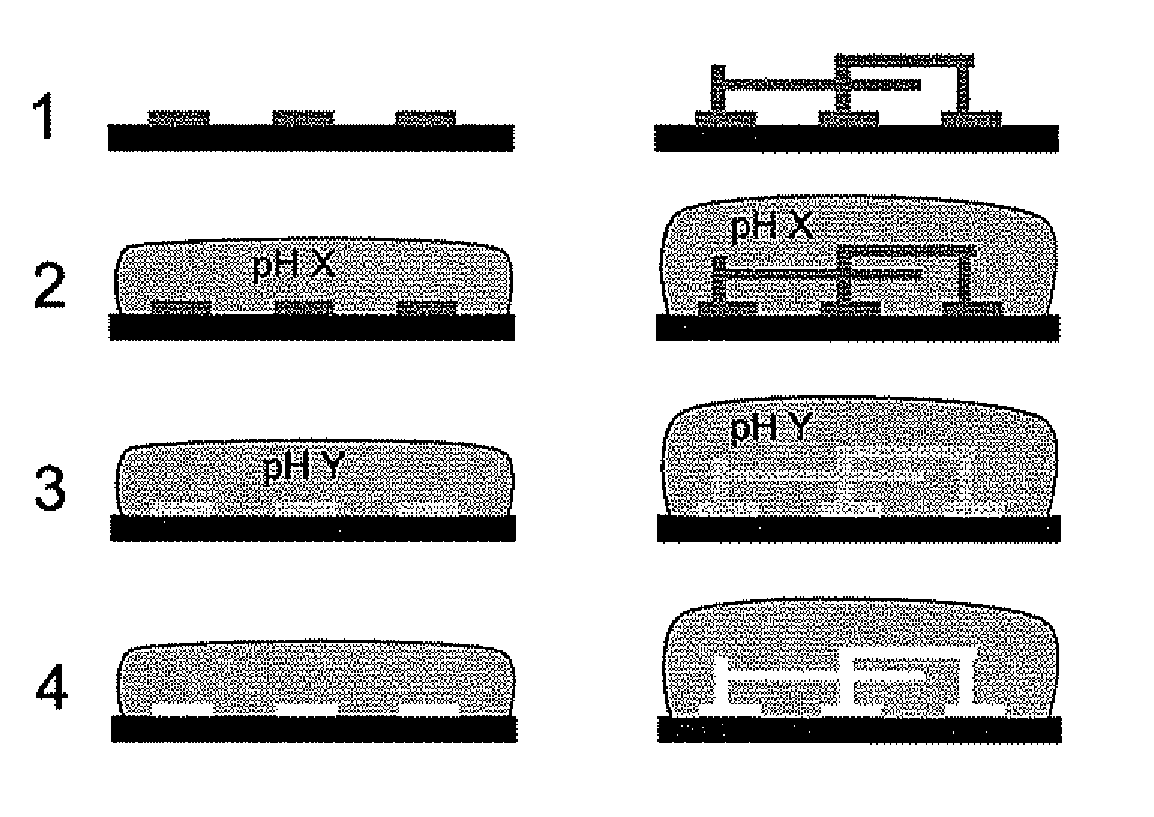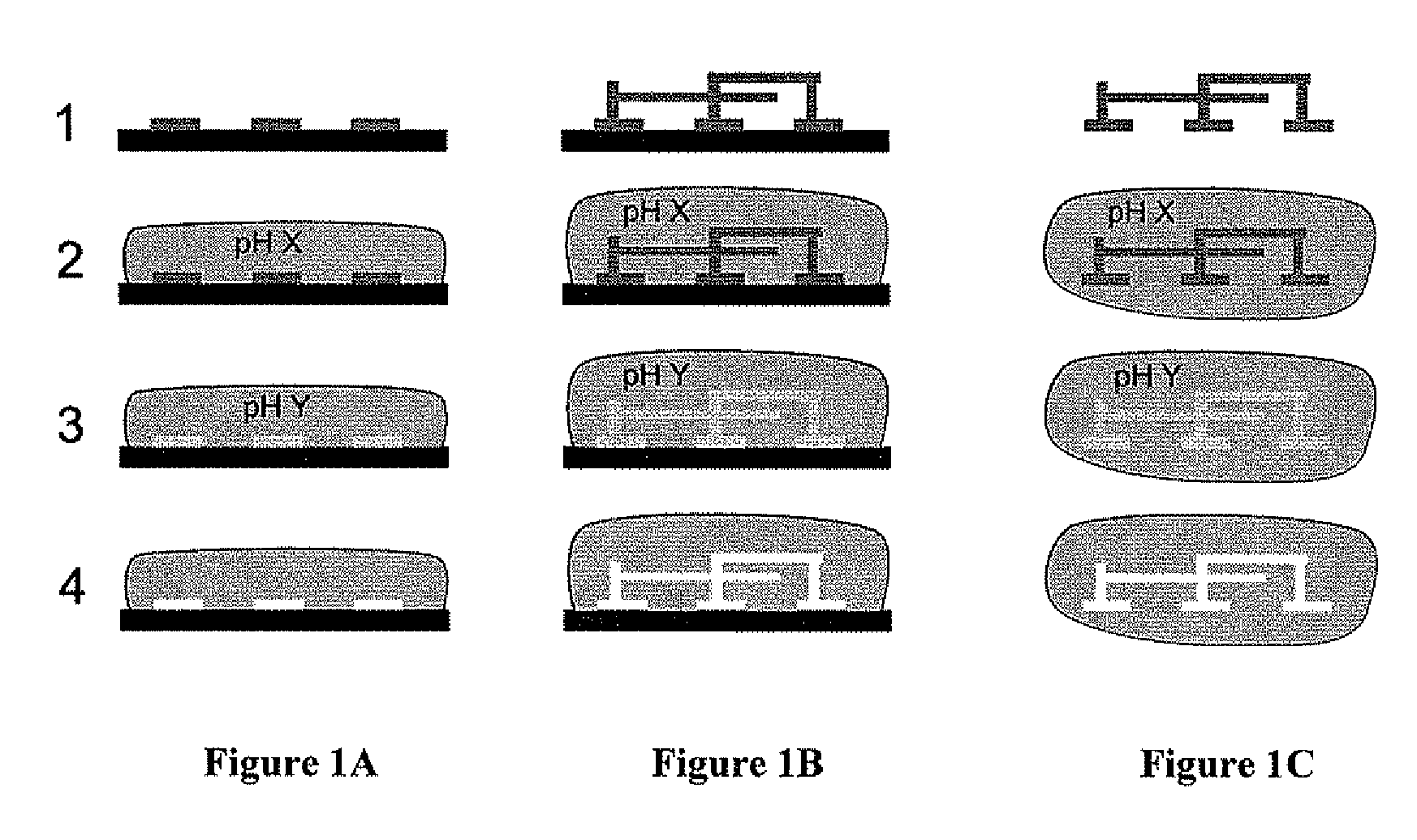Ph-sensitive sacrificial materials for the microfabrication of structures
a technology of ph-sensitive sacrificial materials and structures, applied in the field of microfabrication and composite materials, can solve the problems of poor selectivity of this etch beyond oxides, limiting its usefulness with a wide range of relatively fragile microelectronic materials, inconvenient and/or hazardous, and presenting difficult disposal requirements, so as to increase the rate of removal of sacrificial materials and improve the solubility
- Summary
- Abstract
- Description
- Claims
- Application Information
AI Technical Summary
Benefits of technology
Problems solved by technology
Method used
Image
Examples
example 1
pH-Sensitive Sacrificial Layer
[0061]Shellac was dissolved in methanol at 5% w / v and spun-coated on a silicon wafer at 1900 rpm for 30 seconds. While the film was not optimal (the parameters of the spin-coating, such as solution concentration, solvent, and spin rate, were not optimized), a thin film of shellac was deposited. Gelatin mixed with transglutaminase was pipetted on the wafer, and allowed to crosslink at 37° C. for several hours in a humid environment. The wafer was then placed in a warm 1% ammonium bicarbonate bath, causing the shellac film to dissolve and the gelatin to lift off from the surface.
example 2
pH-Sensitive 3D Structure Produced by Melt-Spinning for 3D Microfluidics in Hydrogels and Other Materials
[0062]Using a conventional cotton candy machine, shellac was spun into an interconnected fiber network. This network was placed in a mold made from polydimethylsiloxane, and a solution of gelatin (5% w / v in Hank's Buffered Salt Solution (HBSS)—Ca—Mg) mixed with 1% (w / v total solution) transglutaminase was poured over the shellac structure. The gelatin was allowed to gel for 5 hours in a humid incubator at 37° C. The composite structure was removed from the mold and placed in a bath of 1% (w / v) ammonium bicarbonate in HBSS (—Ca—Mg) at 37° C. After approximately 10 hours, the shellac had dissolved, leaving a fluidic network inside the gelatin. This can be monitored by eye, as the off-white shellac fibers embedded in the gelatin slowly turn transparent.
example 3
pH-Sensitive 3D Structure Produced by 3D Printing for 3D Microfluidics in Hydrogels and Other Materials
[0063]Structures were made from molten shellac poured onto aluminum foil by hand in a controlled fashion. The structures were embedded in gelatin in a process similar to that described above, and were sacrificed using the same method (though for a longer time, as the structure size was larger).
PUM
| Property | Measurement | Unit |
|---|---|---|
| diameter | aaaaa | aaaaa |
| diameter | aaaaa | aaaaa |
| diameter | aaaaa | aaaaa |
Abstract
Description
Claims
Application Information
 Login to View More
Login to View More - R&D
- Intellectual Property
- Life Sciences
- Materials
- Tech Scout
- Unparalleled Data Quality
- Higher Quality Content
- 60% Fewer Hallucinations
Browse by: Latest US Patents, China's latest patents, Technical Efficacy Thesaurus, Application Domain, Technology Topic, Popular Technical Reports.
© 2025 PatSnap. All rights reserved.Legal|Privacy policy|Modern Slavery Act Transparency Statement|Sitemap|About US| Contact US: help@patsnap.com


